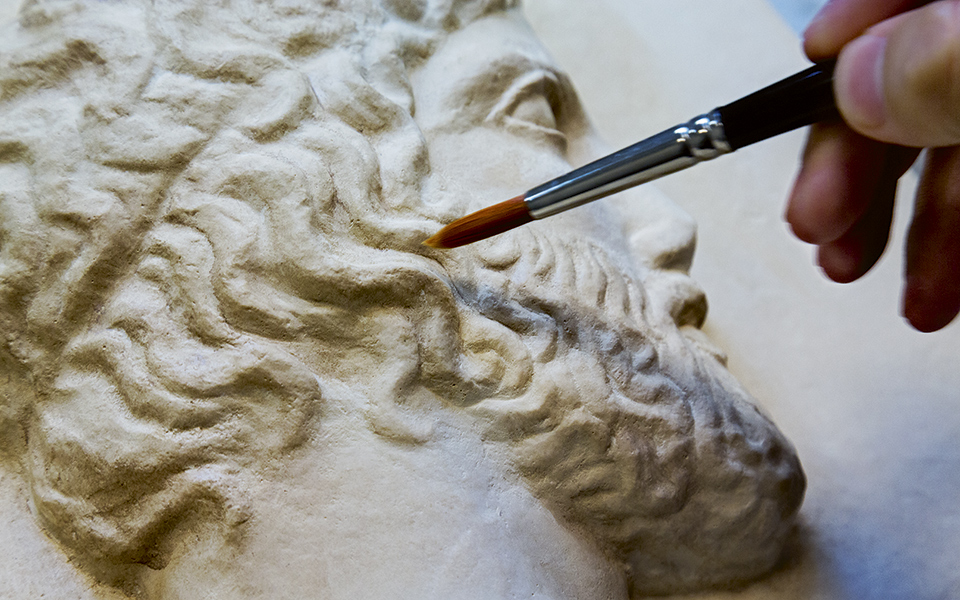The “face” of the Acropolis Museum usually seen by its visitors is that of a uniquely impressive sculptural collection and innovative archaeological display, viewed through an upward experiential ascent from the exposed sub-floor excavations and canted Slopes Gallery to the masterpieces of the Parthenon Hall.
Recently, however, “Greece Is” had the opportunity to take a behind-the-scenes look at the inner workings of the Acropolis Museum – a face normally veiled from public view, but which on close inspection clearly bespeaks the fresh, highly principled, progressive approach of the Acropolis Museum to the ancient materials in its care and to its mission as a leading museological and cultural institution. As Museum Director Dimitrios Pandermalis led us through serpentine back corridors, he explained that what we were about to see represents something unusual in a museum: a specialized, state-of-the-art laboratory for the meticulous study and extremely accurate reproduction of ancient sculptural fragments and entire artifacts.
In approaching its sculptures and other antiquities, the Acropolis Museum strives to achieve a full understanding of the ancient materials used, how the ancient artists rendered these materials and how the objects have been affected or altered by the passage of time. Under the museum’s scientific and technological scrutiny, Pandermalis notes, the ancient artifacts themselves reveal the extraordinary passion with which ancient Greek artists once worked in order to “capture” the desired details. “This sense of passion, so remarkable today, is what the Acropolis Museum hopes to transfer to its visitors: It is about recognizing the details in the items exhibited and thus appreciating their quality.”
“This sense of passion… is what we hope to transfer to our visitors: it is about recognizing the details in the items exhibited and thus appreciating their quality.”
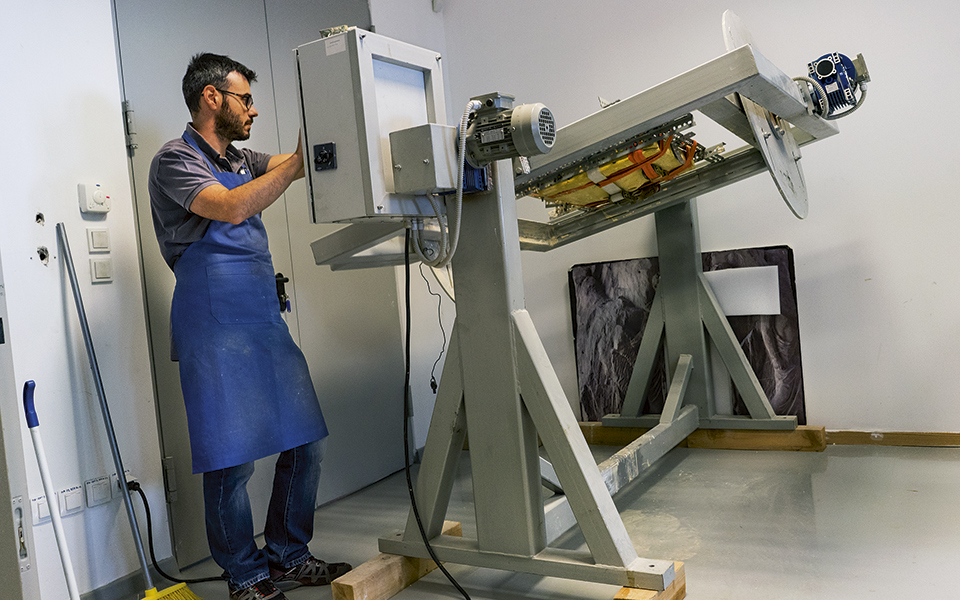
© Nikos Pilos
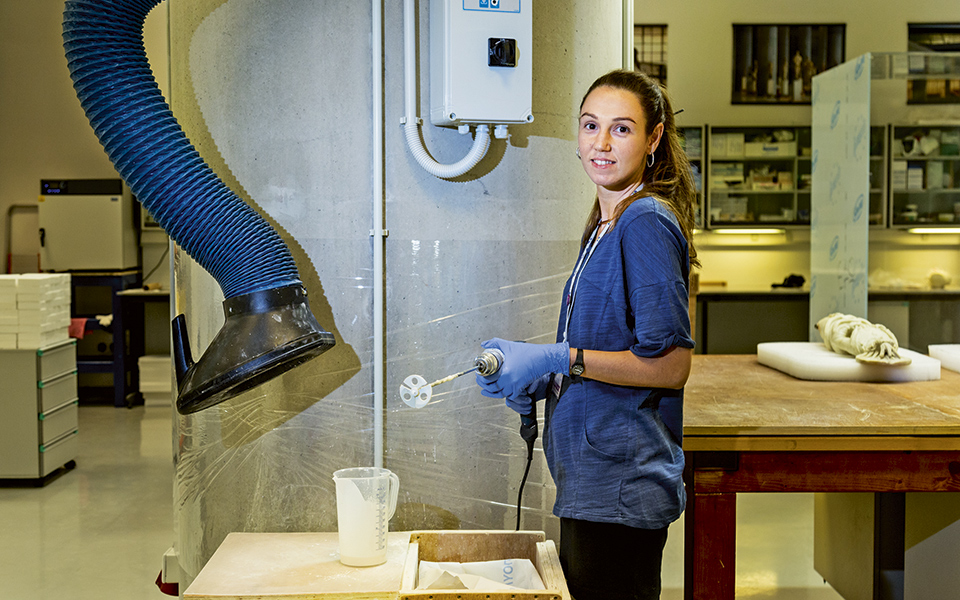
© Nikos Pilos
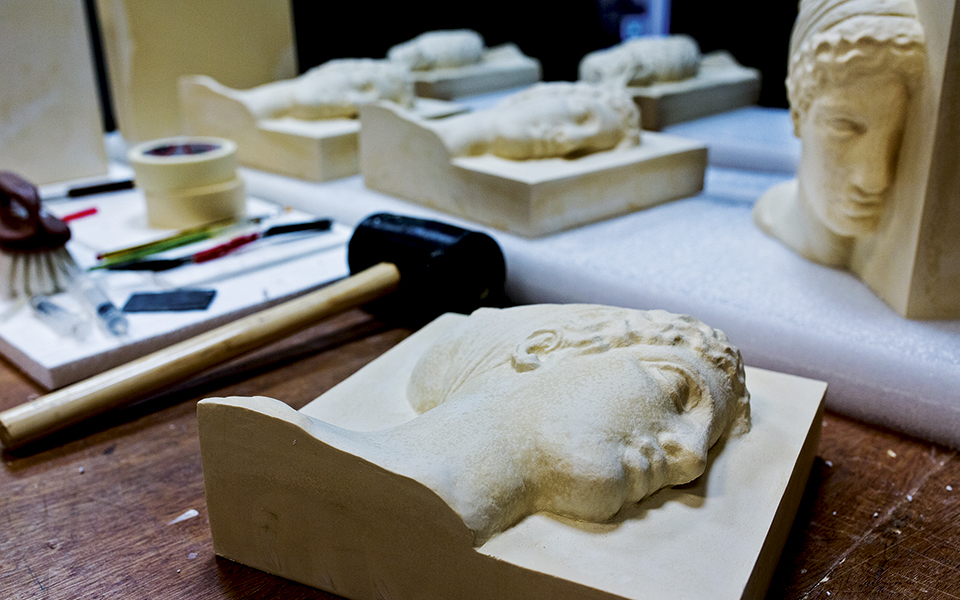
© Nikos Pilos
“Even existing signs of weathering, wear, tool marks and holes for original bronze attachments are reproduced to create an exact replica of the ancient artifact.”
To explore, record and reproduce the Acropolis Museum’s treasured objects and the ways of ancient artists, Pandermalis has assembled a dedicated team of specialists, trained in disciplines ranging from archaeology, archaeological conservation and materials science to fine arts. They rely not only on previously established methods and cutting-edge approaches similarly adopted by the world’s other major museums, but also on newly developed techniques and procedures created right here in the Acropolis Museum’s own laboratory.
The absolute principle guiding their efforts is the need to achieve the highest degree of accuracy possible, a goal in which the museum is also assisted and advised through collaboration with the Polytechnic School of the Aristotle University of Thessaloniki. The methods employed at the Acropolis Museum, according to members of Pandermalis’ team, are constantly being evaluated, refined and improved through in-house experimentation and research.
The actual procedures behind reproducing an ancient fragment or artifact are a far cry from the ancient process of the Greeks and Romans, who employed a mechanical pointing device to transfer the surface topography of an object to a newly created work. This age-old technique involved a certain degree of artistic freedom which today is incompatible with the Acropolis Museum’s highly exacting standards.
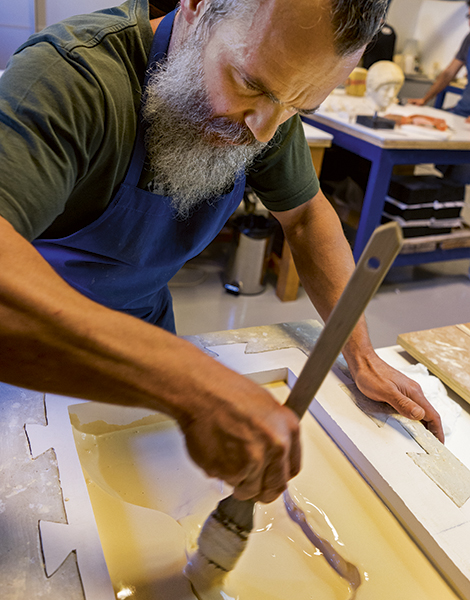
© Nikos Pilos
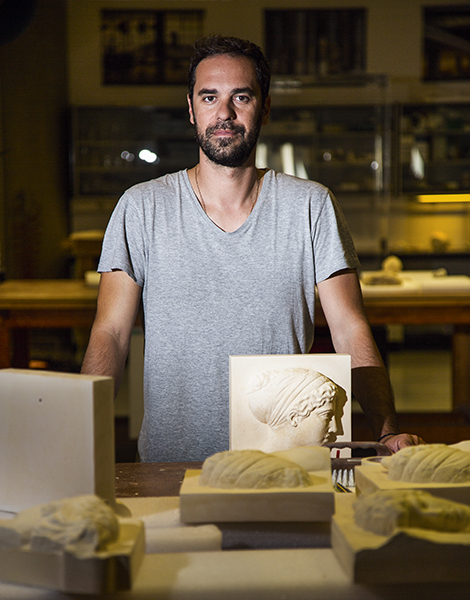
© Nikos Pilos
To begin with, an exact working prototype must first be created, which will be used as a guide in the subsequent steps of mold-making, casting and painting. Prototypes of existing objects are rendered either by working with the ancient object directly or by scanning it using 3D computer graphics technology.
In the former technique, a membrane-thin sheet of zinc foil is first tamped onto the surface of the ancient artifact using water and a fine brush. This protects the original object when it is placed into a container of silicone rubber to form a mold. Once the mold is ready, gypsum plaster is poured in to create a cast. For larger, heavier fragments or artifacts, a two-part mold is used, into which casting material is injected and centrifugally spun to allow a hollow, thin-walled final product.
For plaster, acrylic resin or bronze reproductions of small artifacts, initial prototypes are created through 3D printing of the scanned original objects. These “printed” prototypes are then used as previously described for the mold-making and casting procedures. (To make their copies more like the originals, the museum hopes to be able in the future to begin using marble similar to an object’s original material, rather than plaster.) The last major production step is painting – both of an artifact’s base color and of all its intricate visible surface details. Even existing signs of weathering, wear, tool marks and holes for original bronze attachments are reproduced to create an exact replica of the ancient artifact in its current state of preservation.
Perhaps most intriguing are the minute details of decoration and especially texture, which the ancient artists included so as to depict more realistically the actual cloth type and fabrication details of a figure’s peplos (robe) or other attire. To reproduce texture, cloth thickness, stitching and polychromatic border decorations, the Acropolis Museum’s painters must employ “micro-sculpting” techniques and a program of experimentation with a range of colors and paint types until the exact ancient hues are discovered.
The science, precision and disciplined artistic skills required for all of these procedures pay appropriate tribute to the inspiring original artistry of the ancient Greeks.
INFO
Opening hours: Mon-Thu 9:00-17:00, Fri 9:00-22:00, Sat-Sun 9:00-20:00 (winter)
Tickets: General admission: €5
• 15 Dionysiou Areopagitou
• Tel. (+30) 210.900.0900

